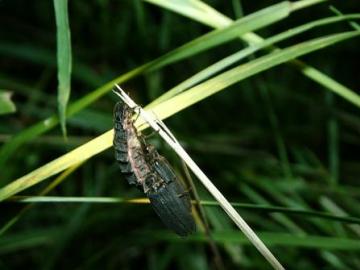Essex Glow-worm Survey
 however, some efforts have been made to ascertain its national distribution. The earliest of these was a survey conducted by the British Naturalists Association (BNA) in the 1960s and early 1970s. It was from this initial survey that a decline in the British Glow-worm population was first suspected; with many recorders noting an apparent fall in numbers. In 1991/92, a survey was launched by Robin Scagell http://www.glowworms.org.uk
however, some efforts have been made to ascertain its national distribution. The earliest of these was a survey conducted by the British Naturalists Association (BNA) in the 1960s and early 1970s. It was from this initial survey that a decline in the British Glow-worm population was first suspected; with many recorders noting an apparent fall in numbers. In 1991/92, a survey was launched by Robin Scagell http://www.glowworms.org.uk Photo: Mating Glow-worms, female being attended by winged males, credit Mike Wright
However, much of the evidence for a decline in the British Glow-worm population collected by the British Naturalists Association and the UK Glow-worm survey is anecdotal and long-term studies on the abundance of glow-worms on individual sites are rare. In an attempt to scientifically document any decline in the abundance of this species in Essex, the Essex Glow-worm Survey was initiated in 2001. As part of this survey, members of the public were asked to establish a transect at a known colony and to monitor the abundance of glowing females, using a standardised method, for a number of years.
New Essex Glow-worm book published by the British Naturalists' Association
Glowing, glowing, gone? The Plight of the Glow-worm in Essex by Tim Gardiner
The aim of this book to present the results of the standardised survey of glow-worm distribution and abundance in Essex which started in 2001. It is believed that the survey is one of the first serious attempts in Europe to combine analysis of the distribution of glow-worms throughout a geographical area, with long-term monitoring of abundance to determine whether they are declining across a range of sites. The book is written with both amateur naturalist and professional ecologist in mind and is a fairly easy read. The book is A5 format and is 80 pages long with colour photographs. More information including a look at the front cover and ordering details can be obtained from the BNA website (www.bna-naturalists.org/shop.htm).

















